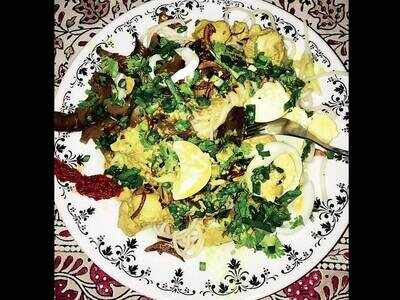
TABLE TALK: The one-dish meal
by Gouri DangeSuch meals can be deceptively simple to look at on the plate
There are plenty of one-dish meals in all world cuisines, no doubt very popular in their place-of-origin and in other parts of the world. And in these times, we’re often looking to simplify at least one of the meals that we produce morning, noon and night.
However, not all one-dish meals are simple. The truly simple one-dish-meal is the one that gets made in a single pot and served in a large bowl or soup plate. Many or most other one-dish meals can be deceptively simple to look at on the plate. But the background work involved in putting together some of them is actually quite elaborate. It often involves the putting together of many main and subsidiary ingredients and processes. It involves chopping boards, peelers, mixer-grinders, food processors, one bowl for soaking something, another for marination, things to be tied and hung, colanders for draining and straining, one pan for searing, another perhaps smaller one for tempering. All adding up to a mountain of washing-up to be done for this so-called one-dish meal!
All that is not used in these kinds of one-dish meals is extra little katoris, bowls, spoons and serving spoons that are not required — which is small-change compared to the rest of the washing-up that some one-dish meals require.
This is not a complaint, and certainly not a dismissing of the one-dish meal. Biryani, khao-suey, khichadi, bisi-belebhaat, lasagna, moussaka, roasts, savoury pies, stews and hotpots are up there in my list of favourite meals. However, perhaps the airy-casual and off-hand tone in which non-cooks will talk of one-dish meals, as if they are conjured up by the meal-maker in the house with a brief brandishing of a wand, is a notion that needs to be dispelled.
At one time, it was even considered a bit ‘lazy’ and most inhospitable to serve guests a one-dish meal. The Marathi word for the cook who produced such a dish is a damning one: ‘utthwal’. It is a difficult to translate word, but broadly means ‘short-cut-taker’ or ‘slapdash operator’. I remember a stuffy neighbour once returning from someone’s house grumbling about the one-dish meal that had been served by her host. “Thank god she didn’t slop the sweetdish on top of it too, to save washing up,” was the uncharitable and sharp remark that was made.
At this time, my mother, quite the emerging pioneer and then the reigning queen of one-dish meals of all sorts, swore under her breath to serve this neighbour just such a dish one day — with the dessert on top of the main meal. It was my mother who turned the Kerala avial that she enjoyed and learnt from a friend, into a one-dish meal in our house — served in soup plates like a stew, no rice, chappati, nothing with it. Just a bowl of all those delicious and onceunfamiliar-to-us veggies in a coconutty broth. Maybe just a fried applam on the side, or crushed over the steaming plate of a beautifully balanced avial. And no, she did not actually serve it with payasam on top to the kvetching neighbour. (She should have.)
To come back to the issue of whether one-dish meals are easy-peasy, ask the cook who produces a one-dish meal, that too mostly from scratch and not from tins and cartons. It is more than likely you will hear that it is at one level much easier to produce that everyday no-brainer combo: poli-bhaaji-aamtibhaat (or variations on this theme depending what region you come from). And that the one-dish meal is hard work in the kitchen and rather more elaborate in terms of prep and execution, than most people (non-cooks) believe or bother to think about.
In our part of the world, the pressure cooker (at which so-called gourmet types turn up their noses) is the one thing that does allow you to produce a nutritious and many-splendoured meal with minimum use of other pots and pans and processes: the mixed vegetable khichadi. With regional variations in the basic tempering — in a broad sweep, north, east, west, south tadkas — an inspired cook could make seven quite varied tasting khichadis over one week. But it takes inspiration for the cook and appreciation of the efforts by the rest of the people eating it, for it to really work. For those who have the kind of family members who say ‘Khichadi only, today also?’ perhaps it is a good time to go on a pens-down, I mean ladles-down strike. And let them eat cake. Or 2-minute abominations.